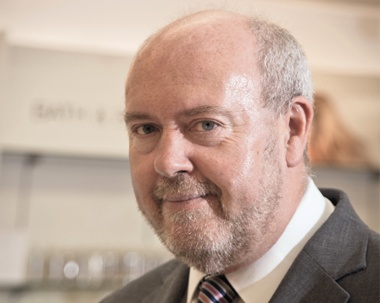
Marks & Spencer hit the news recently when it declared itself completely carbon neutral. Ben Cronin asks M&S head of energy management Mervyn Bowden what role low-energy lighting played in achieving its goal
How much have you had to offset emissions to become carbon neutral?
There will always be some element of energy emissions. It’s not possible to make certain energy sources renewable.
We’ve achieved our biggest target – an improvement of 25 per cent in energy efficiency between our base year of 2006/07 and 2012. We actually hit 28 per cent, which was a huge achievement. We have to get to a 35 per cent improvement by 2015 and the targets beyond that will be even more stringent. But by then I’ll have retired!
How important is lighting in cutting M&S’s energy consumption?
It is probably the most important factor in M&S’s energy efficiency programme, so I’m extremely interested in the business case behind it and whether it works. It’s relatively easy to roll out different lighting technologies into our store chains. We’ve been progressively phasing out the old T12 fluorescent tubes over a number of years and we’re now down to the high-efficiency T5s.
Where do you stand on LEDs?
We’re on the hunt for new technologies, with LED being the most important. It’s not quite there yet, but it’s progressing nicely. We know you get significant maintenance benefits, if you believe what it says on the tin, but we don’t think LED spotlights are quite there. As far as alternatives go, we’ve got the traditional CDMT lamps down from the standard 70W fitting to 20W, so there’s a very easily calculable saving there. We’re working quite closely with providers like Philips to give us an LED offering. I’d expect them to be ready in the next 12 months.
How has the lighting culture changed since you started setting energy targets?
I think one of the real success stories over the last five years, apart from the obvious one of lowering the energy consumption of one light fitting (CDMT) by 50W, is the lowering of acceptable lux levels on sales floors. Those have actually come down quite considerably.
They used to range between 1,000 and 1,200 lux, and in some cases even higher than that, but now they’re around 800 lux and dropping.
How did you make the case that you could bring them down?
I think the case is always that you can sell just as much product without huge levels of lighting but not everybody believes that. It’s one of those subjective things that is very difficult to prove.
It’s also about contrast: if you have darker background lighting you can preserve brighter directional lighting, and lowering the background lighting can mean big energy savings.
And who has the final say on implementing changes to the lighting?
Our engineering and design teams have to convince our retail colleagues that the lighting they’re getting meets their requirements to sell products. That can be fairly time-consuming, because you’ve got to very careful around the semantics before you can even begin to start putting the business case together.
The final decision would go to our retail colleagues at quite a senior level, at executive class, having been through the engineering, specification, design and potentially marketing processes. They get the final say, but all of our directors on the board have got, in some way or another, an energy efficiency performance target, so it’s not as if there’s a vested interest purely around selling product. They also have to consider cost; they have to consider environmental damage; and how the price of the product compares to the competition. We don’t necessarily want to do something that loses competitive position against what others are doing.
What role have lighting controls played in lowering your energy consumption?
Automation has been very high on our agenda. We would rather the lighting in our stores was managed remotely, or automatically, rather than manually. We’d rather it went off at the dot of 6 o’clock rather than have somebody strolling around the store turning all the lights off manually and it not being done until 6.30 or 7pm, or not at all.
There are also big savings to be made by dimming. We’ve done some experiments with T5 lighting which dims down when there’s nobody around in a part of the store. As soon as somebody appears, it activates a sensor and comes back up to 100 per cent again. That’s one of the benefits of DALI systems as well: that you can modularise store lighting.
Are the stores focused on energy management?
All of our stores have individual targets which are developed by their regional energy manager, who are part of our central team. Their targets take account of which developments have been implemented in the store, the age of store, trading hours – as many factors as we build in there. And the store managers are measured against those and there is bonus potential.
Has the role of energy manager grown?
Oh, hugely. There was a book that I contributed to recently which said that energy managers have gone from the boiler room to the boardroom. Energy management these days requires a whole range of skills. It’s nothing like the old days of guys with spanners going around checking boilers.





